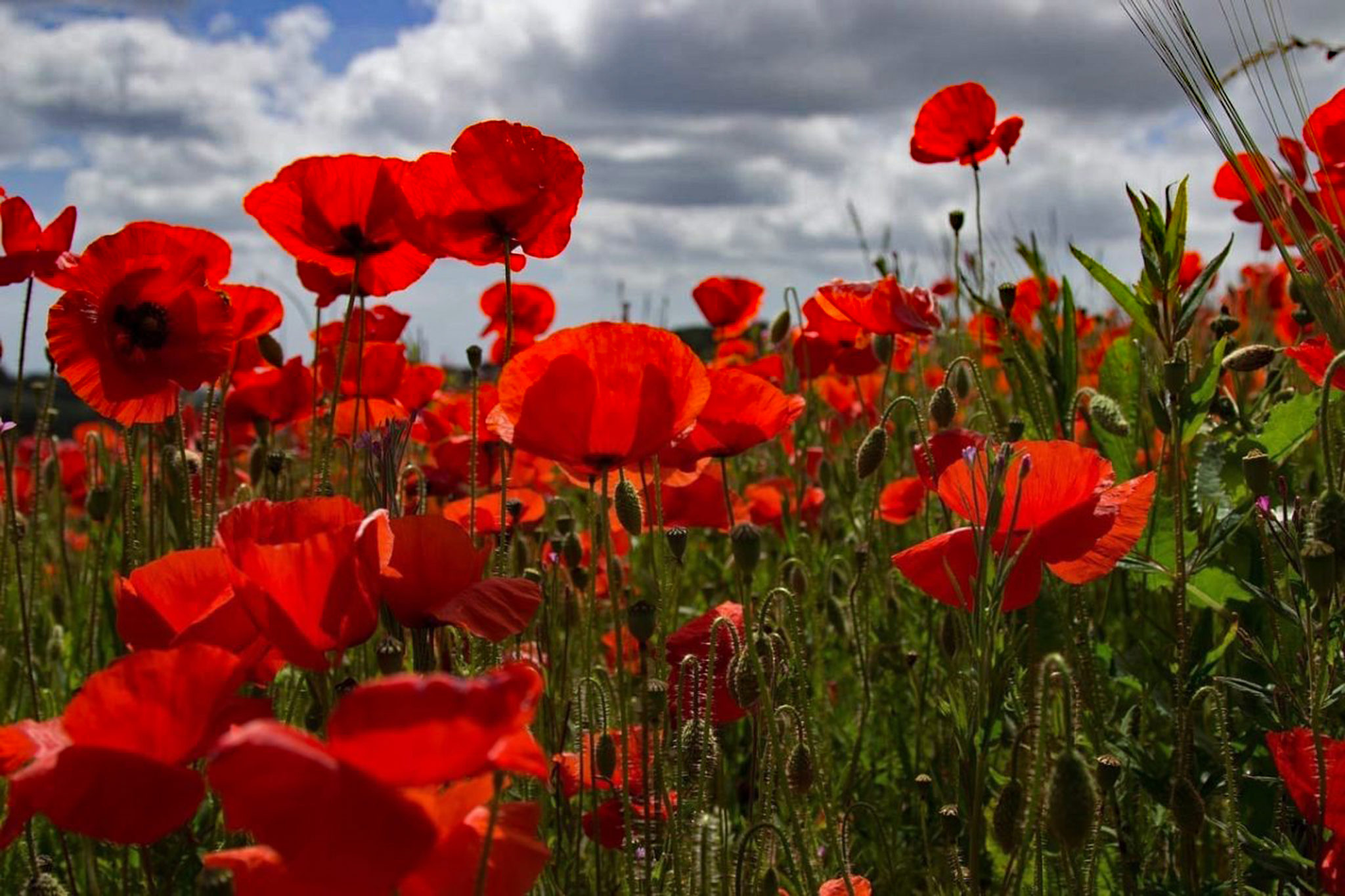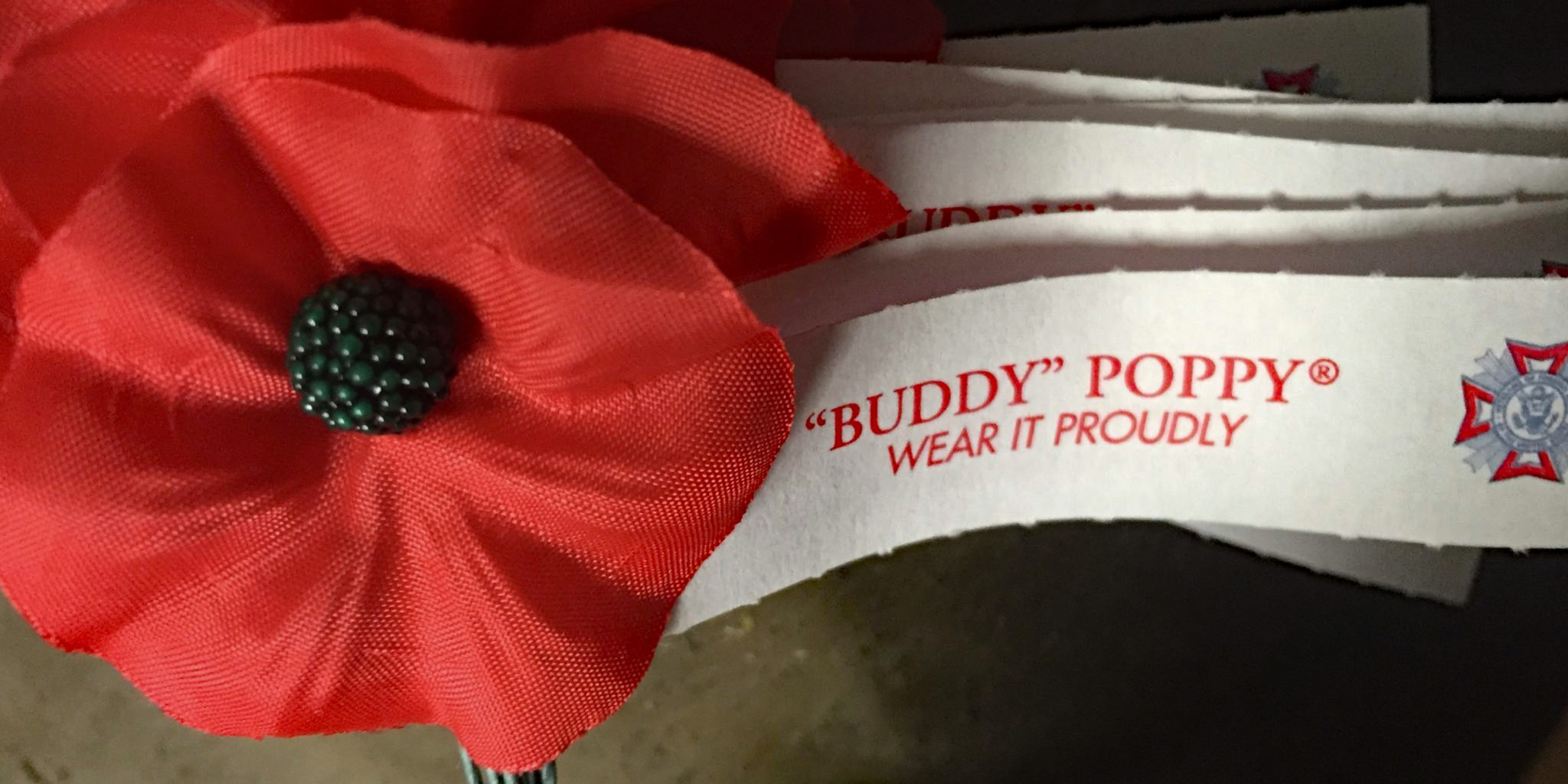Why the Red Poppy Became a Symbol of Remembrance

By Donna Reuss
Alexandria, VA – Memorial Day generally marks the unofficial beginning of summer, with gatherings of family and friends, picnics, and other outdoor activities. But the day also is one of remembrance, honoring the sacrifice of those who, to quote President Abraham Lincoln, “…gave the last full measure of devotion…” And a well-known symbol of this remembrance is the red poppy.
Many have heard or read the poem “In Flanders Field.” It was written in 1915 by Lieutenant Colonel John McCrae, a Canadian doctor on the front lines of World War I, after losing a friend in Ypres, Belgium, an area traditionally called Flanders. LCol McCrae was inspired by the thousands of bright red flowers that grew across the otherwise bleak, battle-scarred landscape.
Through the poem, the red poppy came to symbolize the blood shed during battle, although that symbol may predate the First World War. Several anonymous documents written during the Napoleonic wars note the abundance of poppies on battlefields, drawing a comparison between the color of the flowers and the blood split there. At any rate, it was only after the poem’s publication in Punch magazine in late 1915 that the poppy gained prominence as an international symbol of remembrance.
One person inspired by the poem was Moina Michael, an American teacher, who came across it in the Ladies’ Home Journal just two days before the armistice. She was so moved that she made a personal pledge and hastily scribbled a response entitled “We Shall Keep the Faith.” From that day, she vowed to wear a red poppy as a sign of remembrance. After the war ended, she came up with the idea of making and selling red silk poppies to raise money to support returning veterans.

By Armistice Day 1921, millions of silk poppies, eventually manufactured by disabled veterans, were sold across the United States and England to help Great War veterans find housing and jobs. But Moina sought to create a national symbol for remembrance. She campaigned to get it adopted across the United States. She worked with others trying to do the same in Canada, Australia, and the U.K. As a result of her years of tireless efforts, Moina became known affectionately as “The Poppy Lady.”
In France, Anna Guérin also championed the symbolism of the red poppy. In 1920, she was invited to The American Legion convention in Cleveland, Ohio, to speak about her idea for an “Inter-Allied Poppy Day” to raise funds for veterans, widows, orphans, and charities. She helped convince Legion members to adopt the poppy and to join her in celebrating Poppy Day the following May.
On September 27, 1920, the poppy became the official flower of The American Legion family. Madame Guérin successfully organized the first U.S. nationwide Poppy Day in May 1921, using silk poppies made by widows and children from the devastated regions of France.
Although the Legion adopted the poppy in 1920, its third national convention in October 1921 rejected it in favor of the daisy as its official flower. The Veterans of Foreign Wars (VFW) was the first veterans organization to promote an organized, national, annual distribution campaign, conducting its first distribution in May 1922 and adopting the poppy as its official memorial flower soon thereafter.
The following year, the Legion reversed its decision, again declaring the poppy its official flower. In 1924, distribution of poppies became a national program of The American Legion.
That same year, the VFW registered “Buddy®“ Poppy with the United States Patent Office. The trademark guarantees that all poppies bearing that name and the VFW label are genuine products made by disabled and needy veterans.
Finally, in 2017 The American Legion asked Congress to designate the Friday before Memorial Day each year as National Poppy Day®. Today, both organizations and their Auxiliaries continue to distribute poppies in exchange for donations to support programs for veterans and active-duty military personnel and their families.
Moreover, Poppy Day is celebrated in countries around the world. Millions of people don the red flower to commemorate the sacrifice of the many men and women who gave their lives fighting for their country.

On May 26 this year, wear a red poppy to honor those who served and died for our country. Post a story on social media if your poppy is in remembrance or support of someone. Or share poppies on an Instagram virtual garden at #POPPYDAY.
If you are a veteran, a veteran’s family member, or know a veteran who needs help, go to Virginia Board Veterans Services at www.dvs.virginia.gov/dvs; dss.virginia.gov/community/211.cgi; contact the American Legion Post 24 Veterans Service Officer at [email protected]; or check out the Resources List on the Post 24 website at valegionpost24.com. For crisis intervention and suicide prevention services, dial 988 and Press 1, or text 838255, for the Veterans Crisis Line.
In Flanders Fields
by John McCrae, 1915
In Flanders Fields the poppies blow
Between the crosses row on row.
That mark our place; and in the sky
The larks, still bravely singing, fly
Scarce heard amid the guns below.
We are the Dead. Short days ago
We lived, felt dawn, saw sunset glow,
Loved, and were loved, and now we lie
In Flanders fields.
Take up our quarrel with the foe:
To you from failing hands we throw
The torch; be yours to hold it high.
If ye break faith with us who die
We shall not sleep, though poppies grow
In Flanders fields.
We Shall Keep the Faith
by Moina Michael, November 1918
Oh! you who sleep in Flanders Fields,
Sleep sweet – to rise anew!
We caught the torch you threw
And holding high, we keep the Faith
With All who died.
We cherish, too, the poppy red
That grows on fields where valor led;
It seems to signal to the skies
That blood of heroes never dies,
But lends a lustre to the red
Of the flower that blooms above the dead
In Flanders Fields.
And now the Torch and Poppy Red
We wear in honor of our dead.
Fear not that ye have died for naught;
We’ll teach the lesson that ye wrought
In Flanders Fields.
ICYMI: Mobile Learning Center Gives Alexandria Students Opportunity to Explore Career Paths




